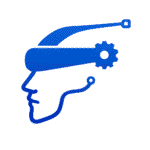Introduction
Hey everyone! Welcome to our blog. Today, we’re diving deep into the world of artificial intelligence with a focus on Microsoft Copilot. If you’ve ever wondered what Microsoft Copilot is, why it’s so important, and how it all started, you’re in the right place. Let’s get started.
Table of Contents
- What is Microsoft Copilot?
- The Importance of Microsoft Copilot
- The Evolution of Microsoft Copilot
- Using Microsoft Copilot
- Prompt Engineering: Writing Effective Prompts
What is Microsoft Copilot?
Microsoft Copilot is a highly advanced AI model created by Microsoft. It assists users by understanding and generating text similar to humans. The magic of Copilot lies in its learning process. It uses deep learning, which is like how our brains learn from experience, to process and create text. By training on a vast amount of internet data—like books and websites—it learns language nuances, grammar, and even some common knowledge.
The Importance of Microsoft Copilot
You might be wondering, why is Microsoft Copilot so important? Here are a few reasons:
- Enhanced Interaction: It revolutionizes the way we interact with machines. With Copilot, we can have more natural and meaningful conversations with AI, making technology more accessible and user-friendly.
- Versatile Applications: Copilot is used in various fields. In customer support, it efficiently handles queries, reducing the need for human intervention. In content creation, it helps writers brainstorm ideas and generate text quickly. In education, it provides personalized tutoring and answers to students’ questions. The possibilities are endless.
The Evolution of Microsoft Copilot
Microsoft has a long history of innovation and collaboration in AI. One of the most significant partnerships was with OpenAI, a leading AI research organization, to develop advanced AI technologies. This collaboration has been crucial in integrating powerful language models into Microsoft’s services, including Microsoft Copilot.
- 2019: Microsoft invested $1 billion in OpenAI to support the development of artificial general intelligence (AGI) and to integrate OpenAI’s cutting-edge models into its cloud services like Azure.
- 2020: OpenAI launched GPT-3, one of the most powerful language models at the time, with 175 billion parameters. Microsoft secured an exclusive license to integrate GPT-3 into its products and services.
- 2021: Microsoft announced the integration of OpenAI’s GPT-3 model into its Azure cloud platform as Azure OpenAI Service, enabling developers to access GPT-3’s capabilities.
- 2022: Microsoft introduced Microsoft Copilot, a suite of AI-powered tools designed to enhance productivity and streamline workflows.
- 2023: Microsoft continued to enhance Copilot by integrating it into more of its products, such as Microsoft 365 applications (Word, Excel, Outlook).
- 2024: Microsoft Copilot reached new heights with the integration of the latest version of OpenAI’s models, including GPT-4, offering more accuracy, coherence, and versatility.
Using Microsoft Copilot
Microsoft Copilot can be accessed through its official website. Here’s a quick overview of its features:
- Prompt Area: This is where you write your queries or give commands to Copilot.
- GPT Models: The right sidebar contains many GPT models fine-tuned for specific tasks, like image generation or cooking.
- Query Example: If you write “full form of computer” and press enter, Copilot provides the answer, includes an image, and highlights the source link.
- Document Upload: You can upload documents and ask Copilot to summarize them or generate hashtags.
- Image Generation: Using Designer GPT, you can generate images. For example, if you write “a boy with a blue hat,” Copilot generates four images using the DALL-E 3 model.
- Voice Commands: You can use voice commands to interact with Copilot.
- Plugins Section: This section contains task-specific models for various functions.
Prompt Engineering: Writing Effective Prompts
Prompt engineering is crucial because it shapes how effectively an AI language model like Copilot responds to our queries and commands. Here are some tips for writing effective prompts:
1. Be Clear and Specific
Clearly state what information or action you expect from Copilot. Avoid vague questions.
- Instead of: “Tell me about artificial intelligence.”
- Write: “Explain the difference between machine learning and deep learning.”
2. Provide Context
Contextual information helps Copilot understand the background and purpose of your request.
- Instead of: “Analyze sales data.”
- Write: “I’m creating a sales report. Provide insights on the trends in customer purchasing behavior over the last quarter.”
3. Specify the Output Format
If you have a preferred format or type of response, specify it in your prompt.
- Instead of: “Summarize the meeting.”
- Write: “Generate a summary of the meeting minutes in bullet points.”
4. Use Sequential Instructions
For complex queries, break down your prompt into clear, sequential instructions.
- Instead of: “Compare software features.”
- Write: “First, list the top five features of the new software. Then, compare them with competitors’ offerings.”
5. Provide Examples
Illustrate your request with examples to clarify what you’re asking for.
- Instead of: “Translate a paragraph.”
- Write: “Translate this paragraph from English to Spanish: ‘The future of technology is driven by artificial intelligence.’”
By applying these techniques, you empower Microsoft Copilot to assist you effectively in various tasks, from content creation and data analysis to problem-solving and decision-making.
Conclusion
Microsoft Copilot is a powerful tool that enhances productivity and streamlines workflows. By understanding its capabilities and learning how to write effective prompts, you can make the most out of this advanced AI technology. Happy exploring!


Leave a Reply